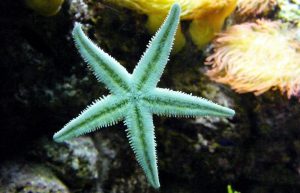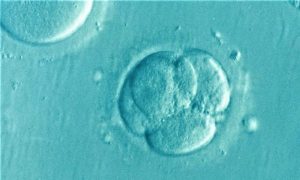Unicellular organisms
A unicellular organism is an organism that consists of a single cell. This means that all the processes of life occur in them, such as reproduction, feeding, digestion and excretion, but, all of them occur in a single cell. Amoebas, bacteria and plankton are just a few types of unicellular organisms. They are usually microscopic and cannot be seen by the naked eye and are called microorganisms.
What are unicellular organisms?
The unicellular organisms are those that perform all their basic functions in a single cell, are also known by the name of microorganisms and among them we find bacteria and protozoa.
Origin
Life on Earth evolved from a single-celled organism that lived approximately 3.5 billion years ago. The study supports the “universal common ancestor” theory first proposed by Charles Darwin more than 150 years ago. Large numbers of individual microbes fossilized in rocks from 3.4 billion years ago have been found.
Characteristics of unicellular organisms
The main characteristics of unicellular organisms are as follows:
- They have asexual reproduction, so an organism can produce its descendants.
- They can be eukaryotes or prokaryotes.
- Their internal part is formed by a liquid different from their external environment that allows the realization of biological processes.
- They have permeable cell wall also called plasma membrane.
- Many of them have scourges to mobilize.
- They can be found in all the habitats of the earth.
Structure
The structure of unicellular organisms is considered relatively simple. They are constituted by a single cell that can be prokaryote or eukaryote. It is this cell that performs all the vital functions of the cell. It also has a diffusion process through which nutrients can enter or leave the cell.
Functions
Let us remember that unicellular organisms are formed by a single cell and perform functions of relationship that allows them to receive all the information from the outside or its interior and give an answer to it in the best way to ensure survival. They then have stimulus, receiver and response.
In this type of organism, the cell is in charge of carrying out the process of capturing the stimuli and elaborating a response, and they usually do so by means of cellular movement.
Nutrition
Unicellular organisms feed on other organisms and on particles that are in a liquid state and are present in their environment. Its digestion is via intracellular and the molecules that are digested by these organisms and that are larger are ingested by means of pinocytosis or phagocytosis. Other particles of normal or smaller size can be entered into the cell through cell membrane and some of the processes occur through osmosis, diffusion and active transport.
Reproduction of unicellular organisms
Unicellular organisms reproduce by means of:
- Binary or bipartite reproduction: this type of sexual reproduction is direct. When the organism reaches its maximum development then it is multiplied by two cells by amitosis, then the protoplasm and the nucleus are strangled giving origin to two baby cells that are equal to the mother.
- Gemmation: this process occurs in yeast cells in which there is a bulge called yolk in the wall, then the stem cell divides and one of these nuclei passes to the yolk where it can produce another yolk before it finally separates from the progenitor cell.
- Encysting: it occurs when amoebas do not find a good way to reproduce and therefore acquire a sphere shape surrounding a protective capsule with which they make a cyst. This cyst has chitin, which allows them to reproduce.
Breathing
In bacteria or cyanobacteria and in unicellular algae or yeasts the breathing is direct because they are formed by a single cell and therefore, they do not need respiratory structures to take oxygen from the atmosphere.
Therefore, the respiration in them can be of two types:
- Aerobic: they may or may not need atmospheric oxygen. One example is protozoa, which have the ability to fix atmospheric O2 for aerobic cellular respiration to obtain chemical energy.
- Anaerobic: they cannot fix atmospheric O2, so they obtain chemical energy from anaerobic glycolysis and fermentation.
Advantages and disadvantages
One of the advantages that unicellular organisms have is that they consist of a single cell which implies that they need less nutrition, they do not need duos for reproduction since it is asexual. The disadvantage is that when they reproduce, the descendants will never be the same as their parents, so many faults are not repaired and there is no way to express the phenotype.
Eukaryotic unicellular organisms
They have the genetic material surrounded by a membrane, so it is located inside the nucleus and have some organs such as mitochondria, chloroplast and ribosomes. Protozoa are a clear example of eukaryotic unicellular.
Prokaryotic unicellular organisms
They have small, very simple cells and are generally known as bacteria. They are considered to be the first living beings to be found on earth during evolution. It has its genetic material organized into a nuclear body which is found in the cytoplasm and which is not bounded by any membrane.
Differences between unicellular and pluricellular organisms
The main difference between unicellular and pluricellular organisms is that pluricellular organisms are made up of many cells, although they come from a single cell, until they evolve into a set of cells.
In unicellular, their only cell, works hard on the cytoplasm, to stay alive, even despite the work that this represents, while a pluricellular organism makes all its cells work together to form tissues, which in turn will form organs, which will then form complex organisms.
Examples
Some examples of unicellular beings are:
- Escherichia coli
- Diatoms
- Pneumococci
- Dinoflagellates
- Streptococcus
- Amoebas
- Protozoa
- Candida albicans
How to cite this article?
Briceño V., Gabriela. (2019). Unicellular organisms. Recovered on 23 February, 2024, de Euston96: https://www.euston96.com/en/unicellular-organisms/










